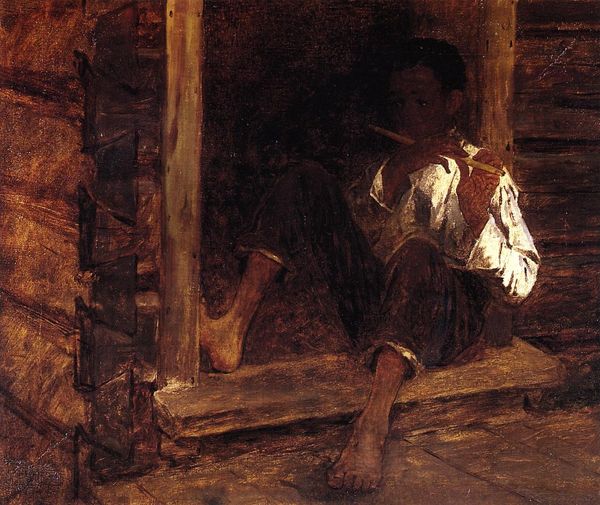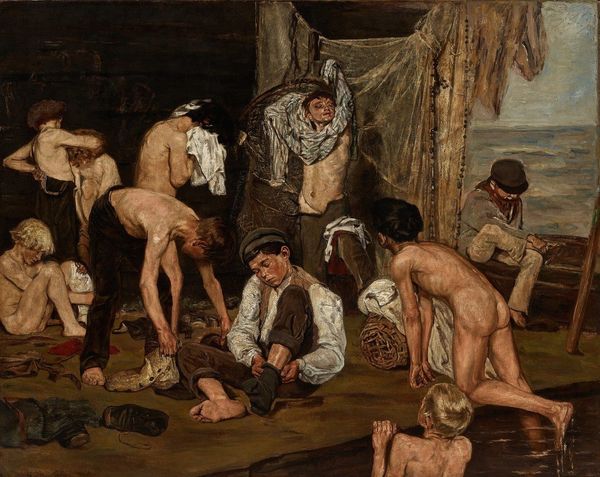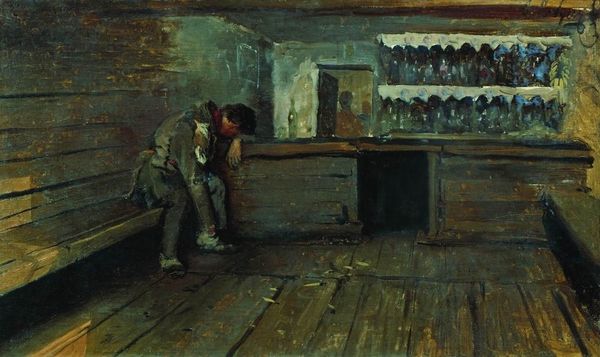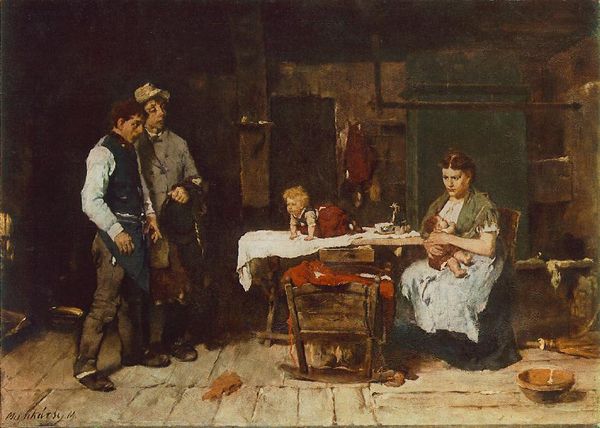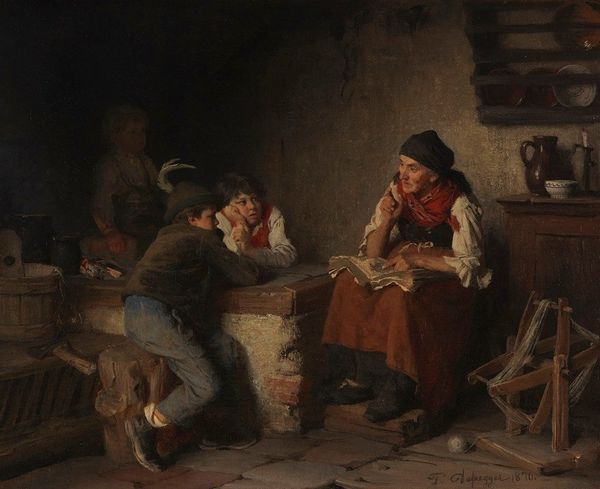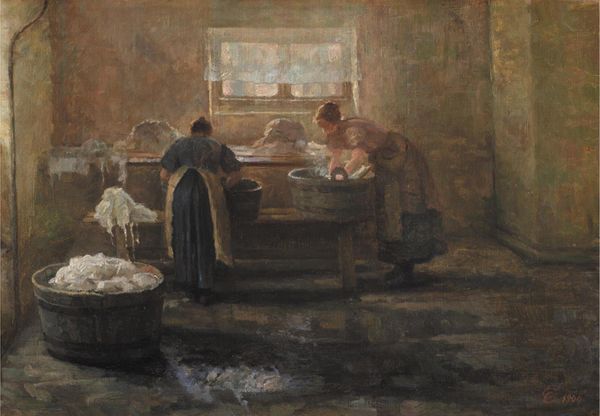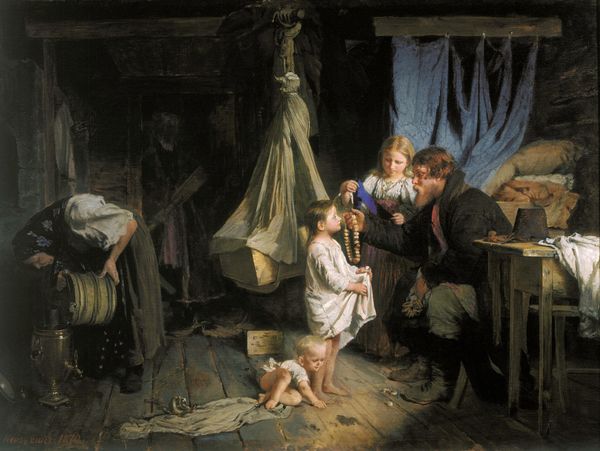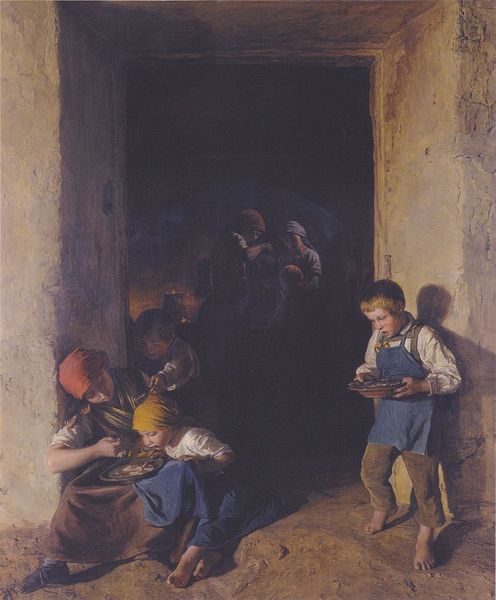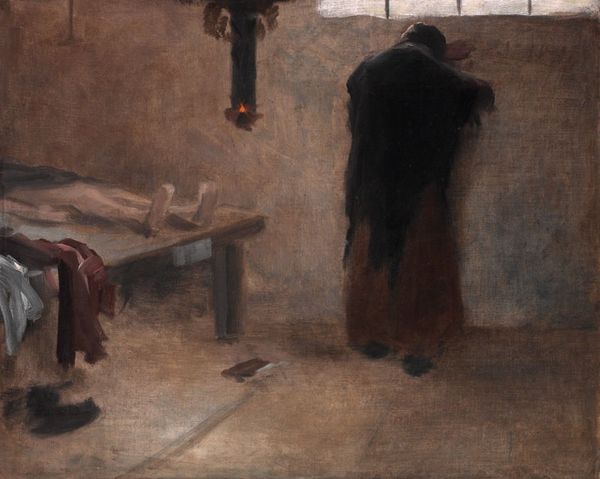
painting, oil-paint
#
figurative
#
painting
#
oil-paint
#
figuration
#
genre-painting
#
realism
Copyright: Public Domain: Artvee
Curator: We're looking at "Hatters in an Italian Village" by Peder Severin Krøyer, painted in 1880. Krøyer, a key figure in the Skagen group of painters, crafted this evocative scene using oil paint. What are your immediate impressions? Editor: The stark light against the shadowy interior gives it an almost theatrical feel, wouldn’t you say? There’s something quite raw about the way the light singles out the figure of the man, and the textures in the woodwork. It's compelling, although quite austere. Curator: Absolutely. That austerity speaks volumes, doesn't it? I think that the figures are emblematic of labor and class in the 19th century. The piece makes clear reference to exploitation in small trades. Note the proximity of the children to the artisan labor. Editor: The limited palette seems very intentional as well, using dark browns and muted earth tones, giving an emotional depth to this work, perhaps even melancholic in tone. The central figure of the hatter is strongly evocative of traditional imagery of labor and craft. Do you see symbolism in the window that breaks the darkness, the small window and light behind? It's positioned above and behind the central figures, a common position for heavenly illumination. Curator: Precisely, though its symbolic charge can cut both ways. We should think about a kind of romanticization of poverty that was in vogue at the time. There is something of that tendency present in the art and literature of the time, no doubt. What seems more direct is the positioning of the three subjects, two who appear to be youth, and the principal hat maker himself, posed almost in an instructional tableau that has real psychological drama. Editor: It certainly resonates, perhaps because the basic themes of labor and craftsmanship it addresses are universal. But, in truth, I still feel those bright slashes of light represent more hope than romanticized struggle. They feel almost transformative, like a promise. Curator: Maybe so! It’s clear that "Hatters in an Italian Village" holds numerous interpretations, prompting crucial discussions about labor, representation, and the power of art to move its audience. Editor: It's a wonderful piece for contemplating those nuances, offering more questions than answers in a visual language that’s both arresting and affecting.
Comments
No comments
Be the first to comment and join the conversation on the ultimate creative platform.
